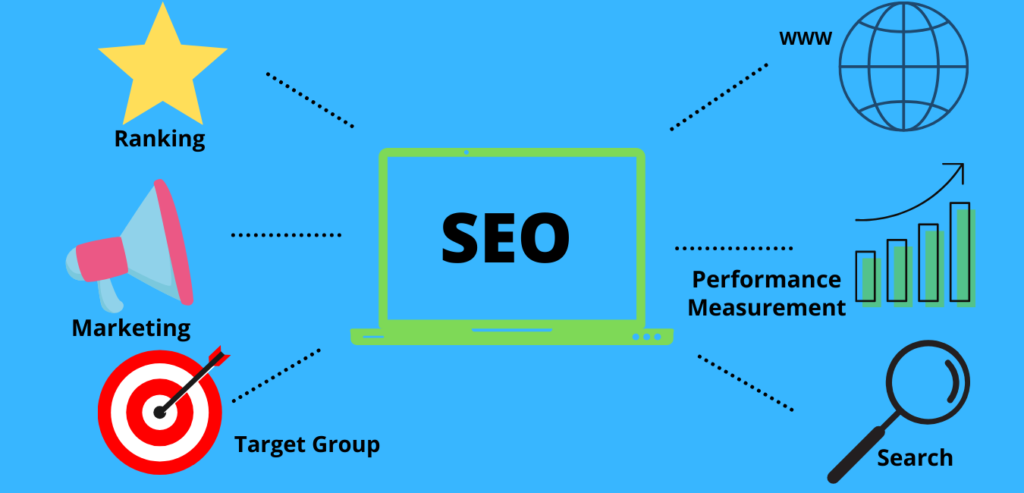
SEO stands for Search Engine Optimization. It’s a set of practices designed to improve the visibility of a website in search engine results. When you search for something on Google or another search engine, SEO helps make sure your website appears higher up in the list of results. This is important because people are more likely to click on the top results rather than those buried further down.
How SEO Works
SEO involves optimizing various elements of your website so that search engines can easily find and understand it. Here’s a breakdown of how it works:
- Keywords: Keywords are the terms and phrases people use when searching for information online. By including relevant keywords in your website’s content, you help search engines understand what your page is about. For example, if you run a bakery, using keywords like “fresh bread,” “best cupcakes,” or “local bakery” can help you attract people looking for those items.
- On-Page SEO: This refers to the practices you use directly on your website to improve its search ranking. Important elements include:
- Title Tags: These are the titles of your web pages, which appear in search results and browser tabs. Make sure they are descriptive and include your main keywords.
- Meta Descriptions: These brief summaries of your page’s content appear below the title in search results. They should be engaging and include relevant keywords.
- Headers: Using header tags (like H1, H2, H3) helps organize your content and makes it easier for search engines to understand the structure of your page.
- Off-Page SEO: This involves actions taken outside your website to improve its search ranking. The most common off-page SEO practice is building backlinks. Backlinks are links from other websites to your site. When reputable sites link to yours, search engines see it as a sign that your content is valuable and trustworthy.
- Technical SEO: This focuses on the technical aspects of your website to ensure it meets search engine standards. Key areas include:
- Site Speed: A fast-loading website improves user experience and helps with search rankings.
- Mobile-Friendliness: With more people using smartphones, having a mobile-friendly site is crucial.
- Sitemap: This is a file that helps search engines understand the structure of your website.
- Content Quality: Creating high-quality, relevant content is essential. Your content should provide value to your visitors, answer their questions, and be easy to read. Engaging content encourages visitors to stay longer on your site, which can positively impact your search rankings.
Benefits of SEO
- Increased Visibility: By optimizing your website, you improve your chances of appearing higher in search results. This increased visibility means more people are likely to visit your site.
- More Traffic: Higher rankings typically lead to more clicks and visits. The more traffic your site gets, the more opportunities you have to convert visitors into customers.
- Cost-Effective: Unlike paid advertising, which requires ongoing costs, SEO provides long-term benefits with a one-time investment. While it may take some time to see results, the long-term benefits are often worth it.
- Better User Experience: SEO practices often improve the overall user experience. For example, optimizing site speed and ensuring mobile compatibility make your site more user-friendly.
- Building Credibility: Appearing at the top of search results can enhance your credibility. Users tend to trust sites that rank higher because they believe these sites are more authoritative and relevant.
- Competitive Advantage: Effective SEO can give you an edge over competitors who are not as well-optimized. By investing in SEO, you increase your chances of attracting potential customers before your competitors do.
How to Get Started with SEO
- Research Keywords: Start by researching the keywords that are relevant to your business. Use tools like Google Keyword Planner to find terms that people are searching for.
- Optimize Your Website: Incorporate these keywords into your website’s content, title tags, and meta descriptions. Ensure your site is technically sound and provides a good user experience.
- Create Quality Content: Focus on creating valuable content that addresses your audience’s needs. Regularly update your blog or website with fresh and relevant information.
- Build Backlinks: Reach out to other reputable websites and ask for backlinks. You can also create shareable content that naturally attracts links.
- Monitor Your Progress: Use tools like Google Analytics to track your website’s performance. Monitor changes in traffic and rankings, and adjust your SEO strategy as needed.
Conclusion
SEO is a crucial practice for improving your website’s visibility in search engine results. By focusing on keywords, optimizing on-page and off-page elements, ensuring technical soundness, and creating quality content, you can enhance your site’s ranking and attract more visitors. SEO is a long-term investment that, when done correctly, offers significant benefits including increased traffic, cost-effectiveness, and a competitive edge. Start with research, optimize your site, and continually refine your approach to achieve the best results.